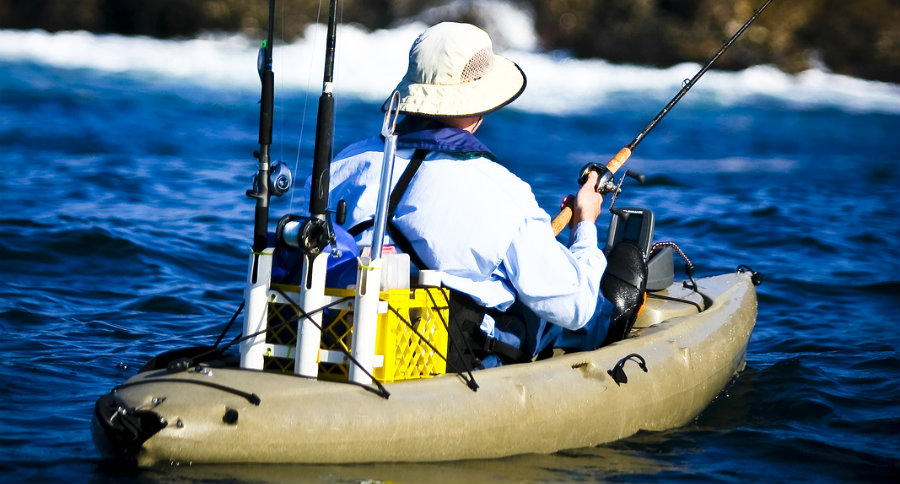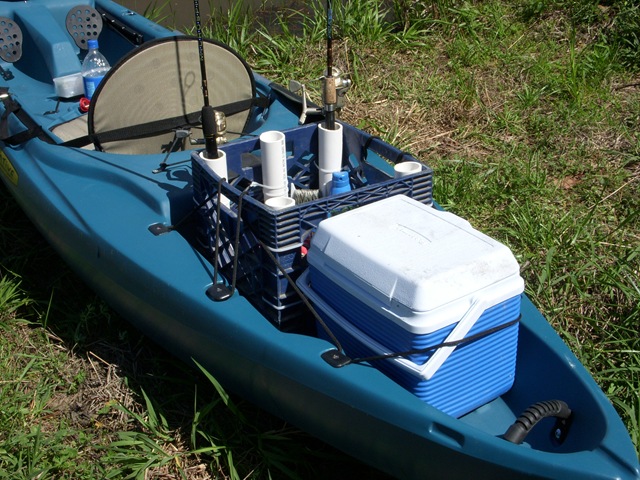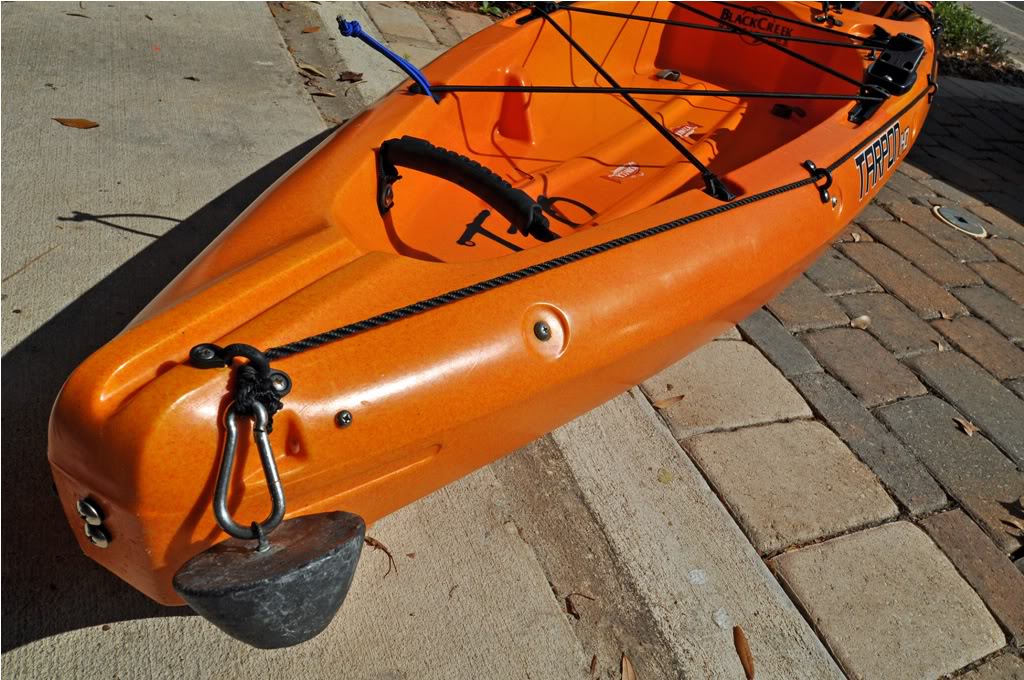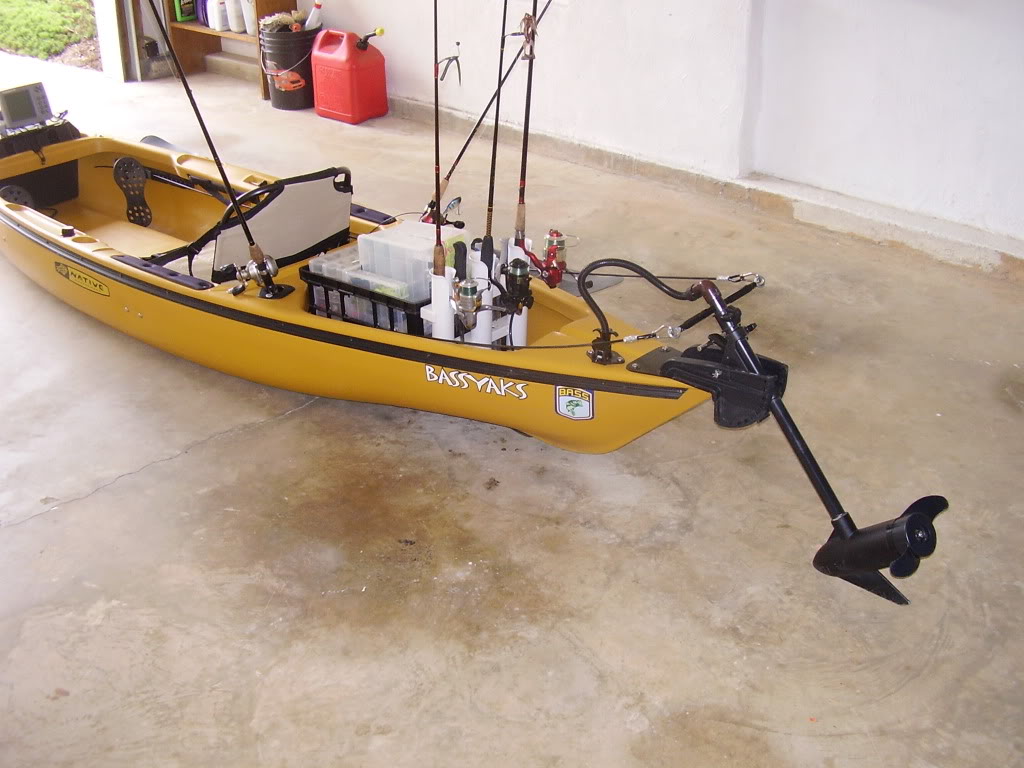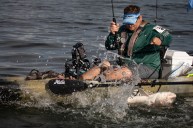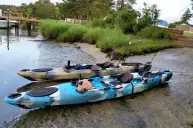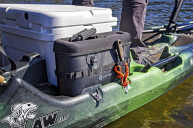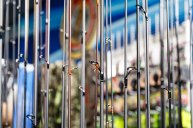Follow these DIY tips to turn your regular kayak into a fearsome fishing machine.
Fishing kayaks need accessible storage containers, an anchor system and trolling motor to a regular kayak. You can add a lot of bells and whistles to a kayak, but for now we'll focus on the basics. Also, these DIY tips work best for sit-on kayaks, because they have more flat space to mount gear on than sit-in kayaks do.
Let's get started with how to carry more gear on your boat.
Storage
Fishing requires a bunch of gear, including tackle, poles, pliers, knives, food and other accessories. When fishing from a kayak, this gear needs to be easily accessible and out of the way of casting and paddling. You'll need a container that can fit on the back of your kayak that's big enough to hold tackle and rods.
Enter the milk crate, a household item that most DIY fishing kayak anglers use to store their gear. What makes it such a good container? The grated sides on a milk crate are useful for attaching things to, such as rod holder and cargo nets. Additionally, the grated sides allow for ventilation and water to drain out. Milk crates can also fit most tackle boxes along with a fishing net.
The best placement for a milk crate is right behind the seat, where sit-on kayaks usually have a flat space. Put down some thick foam padding underneath the crate to make the crate flush and secure with the top of the kayak. Attach the crate using zip ties, clamps or carabiners to the hooks on the sides of the kayak.
The side of the milk crate is the perfect place to attach your rod holders. You can make your own rod holder by getting some DWC piping, which is available at most hardware supply stores, and cutting it the length of the your rod's handle. Attach the piping to the side of the crate using zip ties or fasteners. Milk crates also happen to be the perfect size to fit a fully-loaded tackle box and fishing net.
Anchor Systems
Keeping your kayak still when your casting in the wind or against a current can by a pain in the butt. Having an anchor system on your kayak will keep your boat from drifting while you get after the fish.
For a DIY fishing kayak setup, we recommend installing a trolley anchor system. This is a pulley system that will allow you to drop the anchor from the bow, the stern or the middle of the boat. Anchor trolley systems can be made from scratch for around $10 with parts from a hardware store. If you're curious how to set one up on the cheap, check out this video.
Another DIY anchor option is an anchor pole. This system is ideal for shallow water fishing (15 ft. and under.) For an anchor pole you can use just anything from a broom stick to copper piping as the pole. Tie on some line to your boat and the other end to the pole, and voila, you've got an anchor pole.
Trolling Motors
Trolling motors can be really handy on fishing kayak. Whether you're trawling or just want your hands free from the paddle for a while, a trolling motor will help with cruising on the water. Although, trolling motors can be the trickiest part of a well-rounded DIY fishing kayak setup.
Use a 12-volt transom mount motor. You have a couple options for mounting the motor on the boat. The most obvious way is to install the transom on the stern. This works just fine, but some kayak's have seats that make reaching the stern harder than others.
The alternative is to mount the trolling motor on the midsection of the boat behind the seat. The best way to do this is by attaching the motor to a 2-by-4 mounted across the width of the boat. The 2-by-4 should also be attached to the milk crate, which will house the battery for the trolling motor. This allows you to control the motor within close reach. The downside is that the milk carton container will have much less space for tackle and other gear. If you're interested in detailed instructions for this kind of motor setup, check out this video.
NEXT: CHECK OUT THIS AWESOME SPEARFISHING VIDEO FROM SEACARIOS
https://rumble.com/embed/u7gve.v3tsf1/
